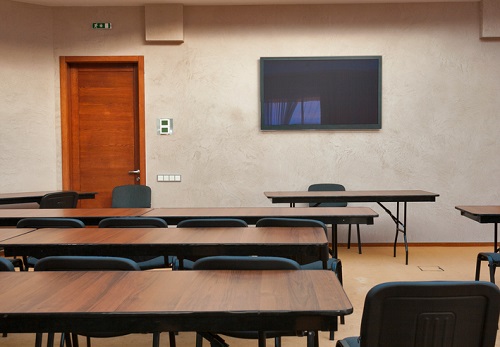
In the modern classroom, there are many educational tools to keep children engaged, and interactive videos are no exception.
However, schools can have a hard time ensuring that video content aligns properly with the curriculum and delivers a meaningful return on investment where student outcomes are concerned.
Fortunately, some key developments in the realm of video learning provide some opportunities for schools to do this.
Stefan Savva is the head of EnhanceTV, an educational video platform that gives teachers and students access to a vast array of curriculum-linked content. He says one of the most notable shifts within educational video is the rise of entertainment TV shows.
“Where once educational video used to be rigidly informative and factual, now they are light – even humourous – and likely to be part of popular culture,” Savva told The Educator.
He pointed to programs like Bondi Rescue, War on Waste and Gogglebox, which he said have been markedly popular in classrooms and effective in illustrating educational topics.
“Inventive teachers use clips from popular programs in numerous ways. For example the Chronicles of Narnia series is used as a metaphor for the story of Jesus Christ and Gruen is commonly used to illustrate the persuasive use of language in advertising,” he said.
“Bondi Rescue is used to teach beach safety; The Castle is used to illustrate Australian culture; and The Lord of the Rings has been used to teach the use of leitmotifs in film scores. Resourceful teachers are using all manner of popular programs to stimulate young minds.”
Savva said locally produced TV programs and films are often accompanied by a study guide, which have seen declining use.
Just 14% of teachers surveyed by EnhanceTV said they now use study guides regularly, a trend that Savva believes has been driven, in part, by the static nature of the format – the PDF file. He pointed to the importance of reformatting study guides and bringing them into a “new interactive era”.
“Teachers value content within a study guide but comment they dislike the over-prescribed PDF structure,” Savva said.
“We have an opportunity to rethink how to create resources like study guides and a good way to approach this is to atomise the study guide into the parts of value [quiz, discussion guide, student activity etc] and then think how it can be repackaged in new ways.”
Savva said atomization of this kind can be found in other publishing sectors that have gone through digital disruption.
“Newspapers were atomised into article pages and albums were atomised into songs. We have conducted our own experiment in re-creating study guides, with staff at EnhanceTV creating a new interactive form,” he said.
“We aimed our study guides at students not teachers, they are topic driven not program driven and we use data to inform teachers of engagement. The core ingredients are the same [quiz, discussion guide, student activity, etc] but we have compiled the value in a radically different and more interactive way.”
In Enhance TV’s experiment, the company worked in collaboration with the creators of Bondi Rescue and Vitamania to create engaging learning experiences that are conducive to the learning process and beneficial to K-12 schools.
“While new, our prototypes shows promising signs of appeal from content producers and teachers alike and these can be seen on EnhanceTV now,” he said.
“In the next year we have a number of exciting new study guides planned and we will make all these available on EnhanceTV.”


